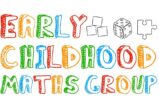Whilst a maths friendly environment will be rich in mathematical possibilities in all areas indoors and out, it can be helpful to have an area which is purposefully focussed on mathematics. These can be ‘pattern stations’, ‘counting libraries’ or ‘maths areas’.
Checklist:
- Is there sufficient floor/surface space for children to lay out, manipulate and explore the resources?
- Are the resources varied, interesting to children and open-ended?
- Are there resources which support all aspects of mathematics including number, pattern and spatial reasoning?
- Do the resources support a ‘hands-on’, practical approach to mathematics (e.g. games and manipulatives to handle)?
- Are resources easy to access and put back?
- Are resources open-ended so that they can be used in different ways over time?
A maths area can be an inviting space where children enjoy exploring materials and manipulatives, especially if these are changed over time and adults engage with them too. Resources can include loose parts and everyday structured material such as egg boxes and ice- trays, as well as apparatus such as interlocking cubes, Cuisenaire rods and pattern blocks. Possibilities include:
- A counting library with a variety of containers, things to count and labels to write
- A weighing station
- A range of measuring tools
- An estimation station
- Construction
- Number models and images, including 100 squares, number lines and tracks
- Maths picture and story books. We have included ideas for books in our guidance and spatial section.
- Varied pattern making resources
- Number lines and tracks
- ‘Which one doesn’t belong?’ boards (four images or items which have similarities and differences to each other)


The best storage will allow children to get things themselves and take them where they want to use them and know where to put them back afterwards.

Easily accessed resources help children to select appropriate items independently (such as objects to count or make patterns). ‘Shadow’ storage, where objects are matched to 2D shadows on the shelf, also supports children’s spatial reasoning. Labels can include photographs and sound buttons (30 second sound recorders) which children press to hear the name.



